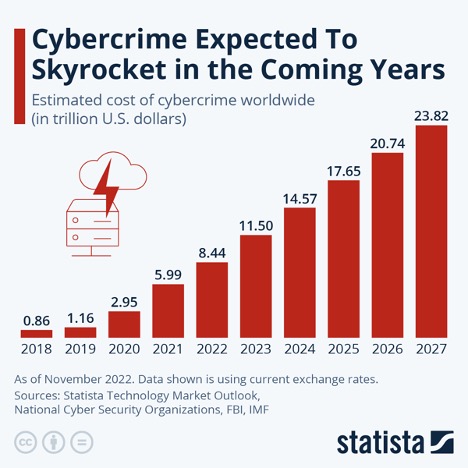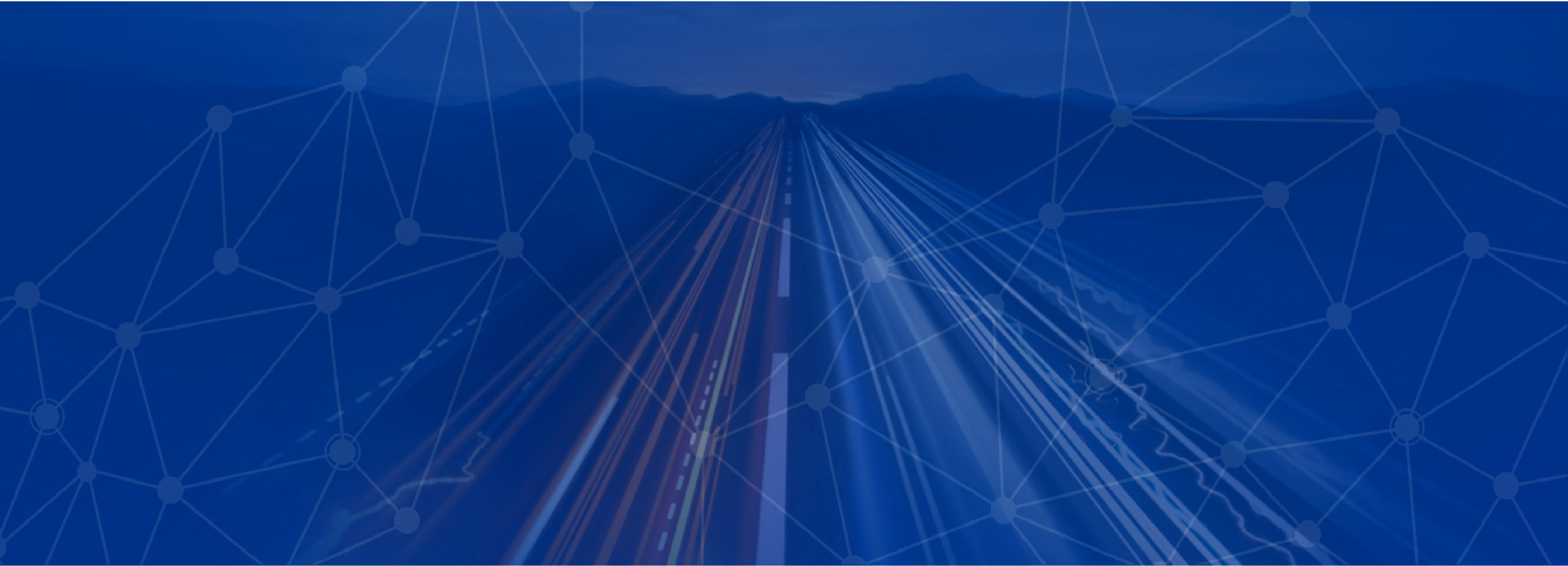One of the biggest threats that all internet users face is phishing. Phishing schemes attempt to trick individuals into providing their personal information, such as login credentials and credit card numbers, to cybercriminals masquerading as legitimate sources. Not to mention, the consequence of falling for these schemes can be dire.
However, things can get much worse. Cybercriminals are also on the prowl for even more damaging attacks, such as ransomware hacks. Ransomware attacks can lock down critical information to prevent users from accessing it unless they pay the ransom demanded by the attackers.
Unfortunately, educational organizations are even more susceptible to these attacks due to the sensitive information they possess, such as student records, financial reports, and research data. This reality puts even more pressure on educational institutions to stay vigilant and proactive to avoid security breaches.
To ensure the safety and integrity of such sensitive data, educational institutions need to take proactive measures to avoid phishing and ransomware attacks. A robust security system is crucial in ensuring the confidentiality, integrity, and availability of sensitive data stored on the organization’s systems.
Reasons Phishing Attacks are Rampant
In 2020, phishing emails and websites were the most common entry points for ransomware, with over 610,000 unique phishing websites identified. The concerning trend has continued into 2023, highlighting the ongoing threat posed by phishing attacks in the current digital landscape. But how does phishing run rampant throughout the digital world? The following sections have an answer.
1. Use of AI-ML-based Tools by Attackers
Phishing attacks have become increasingly sophisticated with attackers’ use of AI-ML-based tools. These tools allow attackers to automate and personalize their attacks, making them more convincing and harder to detect. For instance, attackers use machine learning algorithms to create compelling phishing emails that mimic the writing style and language used by the victim’s contacts, making it easier to dupe the victim to fall for the scam. And with the advancement of AI-related tools widely available on the market, the malicious attacks of threat actors have become more efficient, effective, and profitable.
2. Availability of Phishing Kits
Phishing kits have empowered threat actors by providing them with professionally written, pre-built tools that enable them to launch phishing attacks with minimal effort or expertise. These kits, available for purchase on the dark web, contain thousands of lines of code and can be easily configured based on the attacker’s campaign. Following such an approach allows threat actors to launch campaigns quickly and effortlessly, making it difficult for defenders to keep up with the rapidly changing threat landscape.
3. Inadequate Security Awareness
The most significant vulnerability malicious actors exploit is the inadequate employee training on security awareness in some institutions, particularly in phishing and ransomware. This deficiency is the primary reason why such attacks continue to succeed. It can severely undermine employees’ ability to recognize phishing attacks and respond appropriately, resulting in devastating consequences. Failing to address this training and security gap leaves organizations vulnerable to threat actors who are too eager to exploit it.
Understanding the Connection Between Phishing and Ransomware
Phishing has emerged as the primary vehicle for delivering ransomware, making it the most significant cyber threat to organizations in recent years. 78% of organizations experienced at least one ransomware attack in 2021, with 68% attributing the cause to direct email payload or second-stage malware delivery. In addition to that, IBM’s Cyber Resilient Organization Study identified the top three causes of ransomware as phishing (45%), malicious websites (22%), and social media (19%). Phishing and ransomware are closely related because phishing is one of the root methods for delivering ransomware.
The success of a ransomware attack often depends on the attackers’ ability to deliver the malware to the victim’s system, which is why they frequently use phishing emails as a delivery method. The social engineering schemes, carefully crafted to appear legitimate and customized to specific targets, making them difficult to identify, and the sheer volume of emails received by individuals, especially students, has made it challenging for them to scrutinize incoming emails and note suspicious red flags, increasing successful phishing attacks.
Why are Educational Institutes Easy Targets for Phishing and Ransomware Threat Actors?
With limited IT resources, some educational institutes may be unable to keep up with patch management and other maintenance processes that keep systems safe from exploits. The inadequacy of cybersecurity countermeasures limited IT resources, and the pressure to deliver educational services make schools and educational systems an attractive target for malicious actors.
All educational institutes are not adequately immune to phishing and ransomware attacks, as revealed by an 18-year-old student named Bill Demirkapi at the recent Def Con hacker conference. Demirkapi revealed that his school’s software, including Blackboard’s Community Engagement software and Follett’s Student Information System, contained multiple vulnerabilities that could be exploited using SQL injection and XML inclusion attacks to steal PII (Personally Identifiable Information) or even manipulate grades.
Here are some recent ransomware attacks on school districts to showcase how all educational institutes are not safe:
- Louisiana Schools: Three school districts in Louisiana were targeted by a ransomware attacker in July 2019. It crippled several phones, IT systems and the state-activated emergency cybersecurity powers to bring in the National Guard and cyber experts.
- Columbia Falls School District: The school district was threatened by malicious actors with a data lockup expecting a ransom of $150,000. The attackers declared they would expose student names, addresses, and grades if they didn’t receive the demanded amount.
- Syracuse: The New York City schools were hit with a ransomware attack that locked down one of their computer systems. The district paid the ransom, partially covered by insurance, but they were still locked out of their servers even after paying the ransom.
How Can a Phishing Attack Lead to More Fatal Cyberthreats Like Ransomware?
A phishing attack is a common and effective method used by threat actors to gain unauthorized access to sensitive data in educational institutes by tricking victims into disclosing personal information or downloading malware. While phishing attacks seem independent, they could be a first step to more severe cyber threats such as ransomware, malware, data theft, and more.
Malicious actors often use phishing attacks to deliver ransomware or malware payloads because they can customize phishing emails to target specific individuals. In a successful phishing attack, the attacker can introduce ransomware into the victim’s system, rendering their data inaccessible unless a ransom is paid, causing significant harm to the victim.
Strategies for Preventing Phishing and Ransomware Attacks in Educational Organizations
Here are a few practical strategies for preventing phishing and ransomware attacks in educational institutes:
- Leveraging AI-Based Anti-Phishing Solutions: One vital strategy to prevent phishing and ransomware attacks in educational institutes is leveraging AI-based anti-phishing solutions. These solutions use machine learning algorithms to detect and block phishing emails before they reach their targets. They can also analyze email content and metadata to identify suspicious patterns and behavior, such as unusual IP addresses or domain names, and flag them for further investigation.
- Engaging a Trusted Vendor or Managed Security Service Provider (MSSP): Engaging a trusted vendor or MSSP is critical in preventing phishing and ransomware attacks in educational institutes. These providers have the expertise, experience, and resources to provide comprehensive security solutions, including threat intelligence, risk assessments, vulnerability management, and incident response. They can help educational institutes implement security best practices and provide ongoing support.
- Educate Faculty, Staff, and Students: Among the most effective ways to prevent phishing and ransomware attacks is educating everyone in the educational institution on the risks of such attacks. Conduct regular training sessions that help them identify and avoid suspicious emails, attachments, and links. This way, they can recognize phishing emails and report them to the IT department before any damage is done.
- Implement a Strong Security Policy: The first step is establishing a robust security policy. School networks should block access to potentially risky sites, and student app downloads should be monitored and restricted. Educational institutions must also include mobile security in their cybersecurity strategies since threat actors often use mobile IoT devices, such as laptops, desktops, smartphones, or tablets, to gain access to the network. IoT device testing and implementing end-to-end encryption can significantly reduce the risk of attackers.
- Access Control Implementation: Given that educational institutions have a vast network of students, teachers, and staff, it is crucial to implement access control measures that limit individuals’ access to only the required programs. IAM (Identity and Access Management) systems working on the ‘least-privilege’ and ‘need-to-know’ principles are found to be efficient in preventing malicious infiltration significantly. Access control offers two critical advantages. Firstly, it prevents unauthorized individuals from accessing sensitive information. Secondly, it limits attackers’ ability to cause harm if they compromise someone’s account.
Higher Ed must prioritize investing in modern and effective cybersecurity technologies to protect themselves against the constantly evolving threat of cybercrime.
Educational institutions face a significant threat from phishing attacks, which can escalate into more dangerous cyber threats like ransomware. To safeguard against such risks, educational institutes must proactively implement practical strategies for preventing and mitigating the damage caused by phishing attacks and other related cyber threats. It can be achieved by raising awareness among staff and students, implementing strong security measures, and working with experienced cybersecurity experts. Education institutes can ensure their systems and data safety and security by taking concrete steps, such as adopting AI-based anti-phishing solutions to keep their information assets secure from malicious actors.









